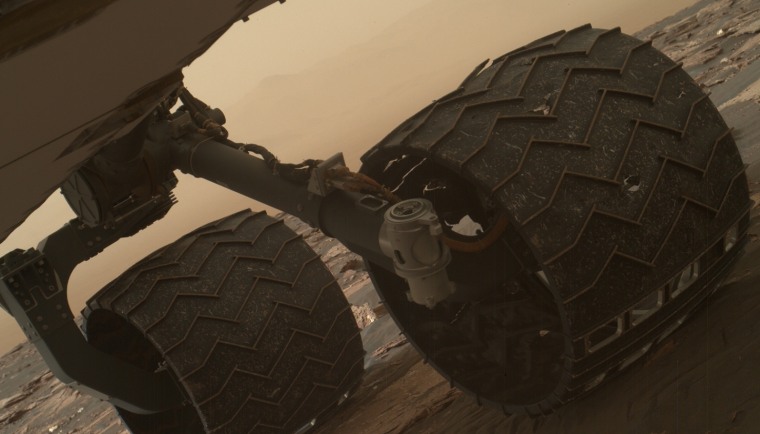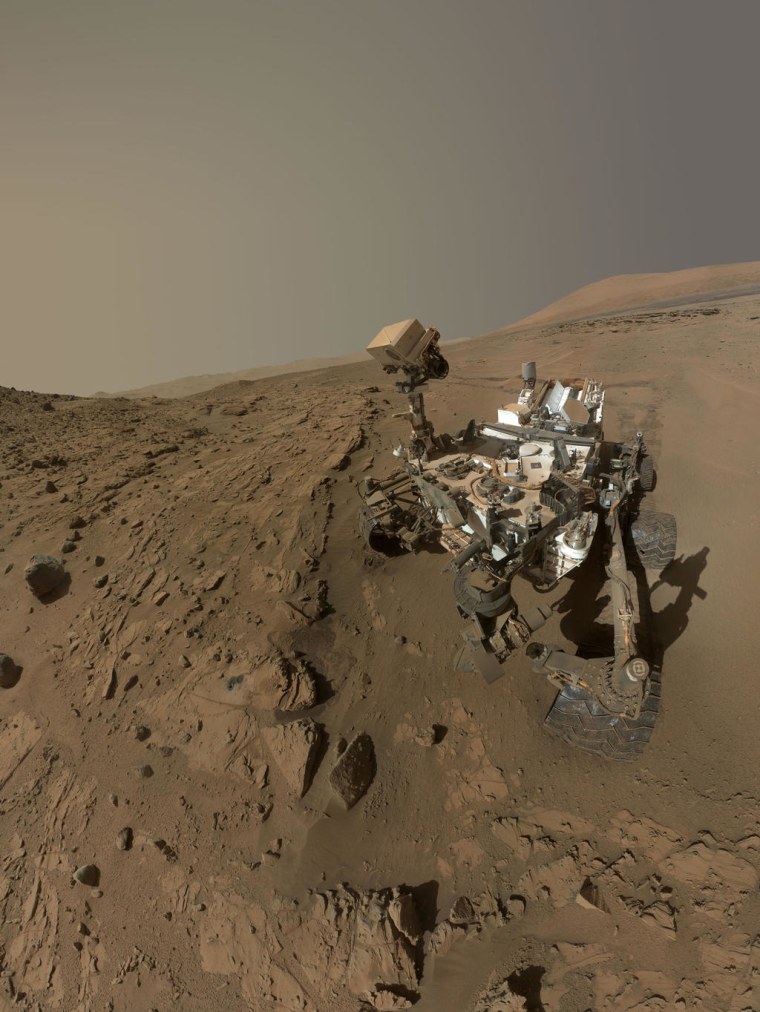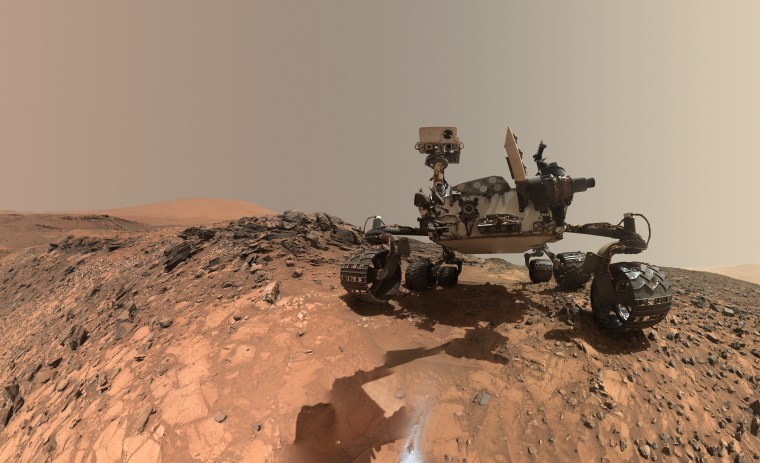Curiosity is showing its age. NASA’s car-sized Mars rover has been successfully roaming the surface of the red planet for almost five years now, but a recent check of its six wheels shows that one has breaks in its zigzag treads.
NASA says the damage — which it blames on rough terrain — won’t keep Curiosity from completing its mission. And it could even give the space agency valuable clues about how to hone the design of an upcoming rover.

“The project that is developing NASA's next Mars rover, for launch in 2020, had made changes to wheel design," says Curiosity project manager Jim Erickson. "And the new design has demonstrated much longer wheel lifespan in long-distance driving tests.”
The Curiosity mission team at NASA’s Jet Propulsion Laboratory monitors the wheels by studying photos taken by the rover’s own Mars Hand Lens Imager, the same camera the rover uses to snap its famous selfies.
A photo taken in January showed no major damage to the aluminum wheels, each of which is about 20 inches in diameter and about 16 inches wide. But a March 19 photo showed that the middle left wheel has two broken tread sections. NASA says that when three of these tread sections, or "grousers," are broken, the wheel has reached about 60 percent of its useful life. Through March 20, Curiosity has driven 9.9 miles. Reaching its farthest uphill destination will require the rover to drive no more than an additional 3.7 miles.
NASA says the new rover will have thicker wheels with curved rather than zigzag grousers. Engineers have tested this new design driving over the same types of terrain that damaged Curiosity’s wheels.

Curiosity’s primary mission — to determine whether Mars was ever capable of supporting microbial life — was fulfilled within the rover’s first year on the red planet, when it found evidence that Mars once had liquid water and the chemical ingredients for life. But the rover has more work to do. As Curiosity project scientist Ashwin Vasavada says, “The mission’s planned studies are intended to further understanding about how an environment that was very wet became more harsh and dry.”
In any case, Curiosity doesn’t seem particularly bothered by the damage to its wheel — at least if you believe its tweets.
The rover has already won the hearts of people back here on Earth. Almost 5 million watched the online stream or TV coverage of its landing in 2012, and more than 3.5 million follow Curiosity on Twitter.
Hang in there, Curiosity!
